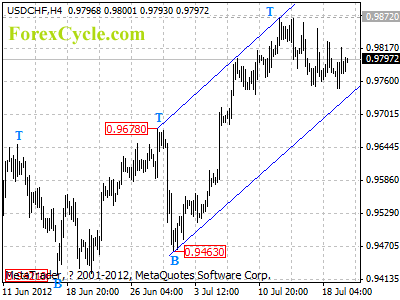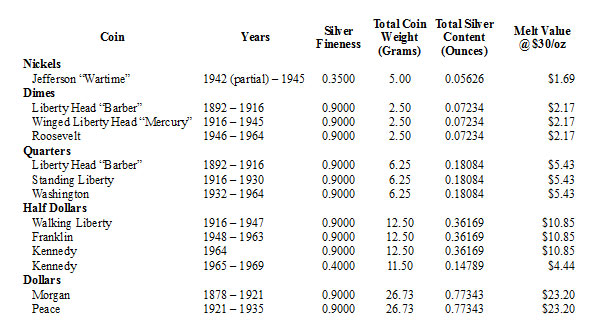By MoneyMorning.com.au
Most small investors spend the majority of their time looking at stock markets. However, I’ve always believed that to get a deeper understanding of what’s really going on, the best thing you can do is to try to figure out what the bond market is telling you.
Why? Because the yields on government bonds have a major impact on the price of virtually all investment assets. Put simply, rising yields tend to reduce the value of assets, while lower ones tends to make them go up. That’s because government bonds are supposed to be the ‘safe’ assets.
That’s very debatable, but assuming the market believes this, then if the yields on government bonds go up, then the yields on other assets such as shares or property should go up too in order to remain attractive. These higher yields are usually achieved because prices fall.
The current action in the bond market is probably the biggest conundrum facing investors today. Despite the massive debts held by governments, yields on the likes of UK gilts and US Treasuries are at record lows.
Is the bond market one massive bubble like dotcom stocks in 1999 or property in 2006, or is it telling us that we face years of Japan-style deflation and stagnation?
The Bond Market ‘Bubble’:
Irrational Exuberance or Plain Realism?
Have a look at the chart below. It shows the redemption yield on ten-year UK government bonds, less the rate of inflation, since 1956 – the real yield. This chart is used by the bond bubble camp to claim that government bonds are massively overvalued and ready for a crash.
UK Real Ten-Year Bond Yields
They argue that no rational investor should accept bond yields less than the rate of inflation. Investing should be about preserving and growing the purchasing power of your money, therefore buying bonds in the current market doesn’t make sense.
I’ve got a lot of sympathy with this view of the bond market. With ten-year UK gilts at 1.55%, there’s little to lose in holding cash.
However, I can also understand why big companies might want to deposit large amounts of cash in the bond market rather than a bank. Deposit insurance limit might cover most small investors’ needs, but it doesn’t help companies with significant cash holdings.
The bubble camp also points out that the UK and US bond markets have been heavily manipulated and propped up by the money-printing and bond-buying of their respective central banks. This has in effect, resulted in a one-way bet for investors.
With heavy central bank buying of bonds pushing up prices and pushing down yields, there’s been some easy money to be made in the bond market. This can’t go on forever, argue the bond bears.
Again, I have a lot of sympathy with this view. But let’s ask ourselves for a moment: what if the bond market is right? What if the UK, US and European economies are actually going the same way as Japan?
If that’s the case, and we’re facing low economic growth and falling prices (deflation), then bond yields could go even lower. Is this the outcome that Western bond markets are correctly anticipating?
Are the UK and the US Bond Markets Turning Japanese?
The arguments made by the bond market bears are very sensible, but I’m not in a hurry to dismiss the bond market. Compared to the equity market, it’s often seen as the smart money. It’s always worth at least considering the possibility that it’s priced correctly.
So could we be heading for a deflationary bust despite the best efforts of the Federal Reserve and the Bank of England?
Let’s have a look at what has happened in the Japanese bond market.
Japanese Ten-Year Bond Yields (%)
As you can see, in 1995, more than five years after the Japanese stock market peaked and the economy started to cool, Japanese government bonds (JGBs) were still yielding 4.5%. Seventeen years later, yields on JGBs are now sitting at 0.77% as repeated attempts to stimulate the economy and increase inflation have failed.
This is because Japan is still stuck in what is known as a ‘balance sheet recession’ – a recession caused by too much debt. The focus of consumers and companies has been to get rid of debt, rather than spend more money. Printing money and cutting interest rates doesn’t do any good in this scenario, because there is no desire to spend, just to save and pay off debt.
Most of the Western world is currently in a similar situation. It too has way too much debt and unfunded welfare liabilities. The credit boom of the mid-2000s means that debt has to be repaid and/or bankruptcies need to rise. Governments and central banks have been doing everything they can to prevent the market from doing its job and a natural correction happening – just as occurred in Japan.
This debt overhang means that despite the large amounts of money printing, the UK and US economies are still stagnating. Money printing is barely keeping the huge deflationary forces at bay.
So could bond yields fall further? Respected economists such as Gary Shilling think so. Shilling has a fantastic record in predicting major economic events and is a prominent deflationist – have a read of his book The Age of Deleveraging. Earlier this year, in a television interview he discussed the possibility of the yields on 30-year US bonds hitting 2% (they are currently 2.58%).
How is this possible? Well, looking back at Japan again, you can see that even with yields of less than 1% you can still have positive real yields (in other words, you can still make a ‘real’ return) if you have deflation. If this is the fate that awaits the UK and US then rather than being hysterical and heavily manipulated, the bond markets are ahead of the game.
Japanese Real Yields (%)
What Happens Next: Deflation Then Inflation?
So there are good grounds to argue that the bond market may be right in predicting that deflation is the major threat in the short-term.
The forces of deflation are so great that the central banks will have to print lots more money than most people expect to create inflation and erode the massive debt burden we face. Only then will the bond market bubble pop and stock and property markets will crash.
The other alternative is for governments to get out of the way and let the markets correct. But for politicians this would be akin to turkeys voting for Christmas.
In Greece, Ireland, Portugal and now Spain, the bond market – free of central bank money printing – has done its job and punished reckless economic behaviour. In the UK and US, the central banks have so far postponed the day of reckoning, but that day will surely come. And when it does, they seem to be voting for an inflationary rather than a deflationary bust.
So What Can You Do With Your Money if the Bond Market Collapses?
It’s not easy to predict when the bond market will collapse as central bankers get their way and spark inflation. The good news is that you don’t have to.
While government bonds could remain at low yields – and could go lower – we still wouldn’t own them. There’s little upside and lots of downside. If you are worried about deflation, then as an individual, holding cash is a safer bet. It also gives optionality to take advantage of falling prices (in other words, if you’re sitting on cash, you can quickly deploy it when you spot bargains).
Hold some gold too as a hedge for when inflation rears its ugly head, as politicians try to print us out of trouble.
Finally, any equity investments should be in companies that have pricing power and so are able to cope with both inflation and deflation.
Phil Oakley
Contributing Writer, Money Morning
Publisher’s Note:This is an edited version of an article that first appeared in MoneyWeek (UK)
From the Archives…
The Credit Market Debt Bubble and the Role of Gold
13-07-2012 – Greg Canavan
How to Survive and Thrive from China’s Bust
12-07-2012 – Kris Sayce
Payday Loans: Why This Lender of Last Resort Isn’t the Bad Guy
11-07-2012 – Kris Sayce
What A Slowing Chinese Economy Means For Pork Chops
10-07-2012 – Dr. Alex Cowie
Late News: Bankers Rig Interest Rates, No-One Fired
09-07-2012 – Dr. Alex Cowie

What Are the Bond Markets Telling Us?

 Tradervox.com (Dublin) – A moeda de 17 nações caiu contra a maioria dos pares mais importantes após especulações de que um relatório da confiança dos consumidores previsto para ser emitido dia 23 de julho irá demonstrar um enfraquecimento na confiança do consumidor e setor industrial na região.
Tradervox.com (Dublin) – A moeda de 17 nações caiu contra a maioria dos pares mais importantes após especulações de que um relatório da confiança dos consumidores previsto para ser emitido dia 23 de julho irá demonstrar um enfraquecimento na confiança do consumidor e setor industrial na região.









